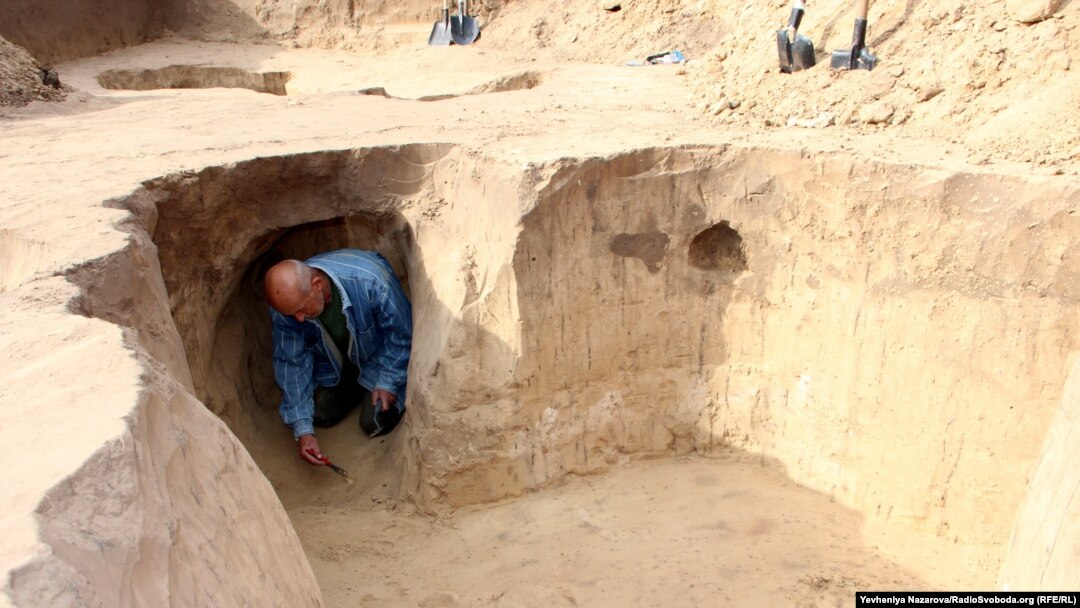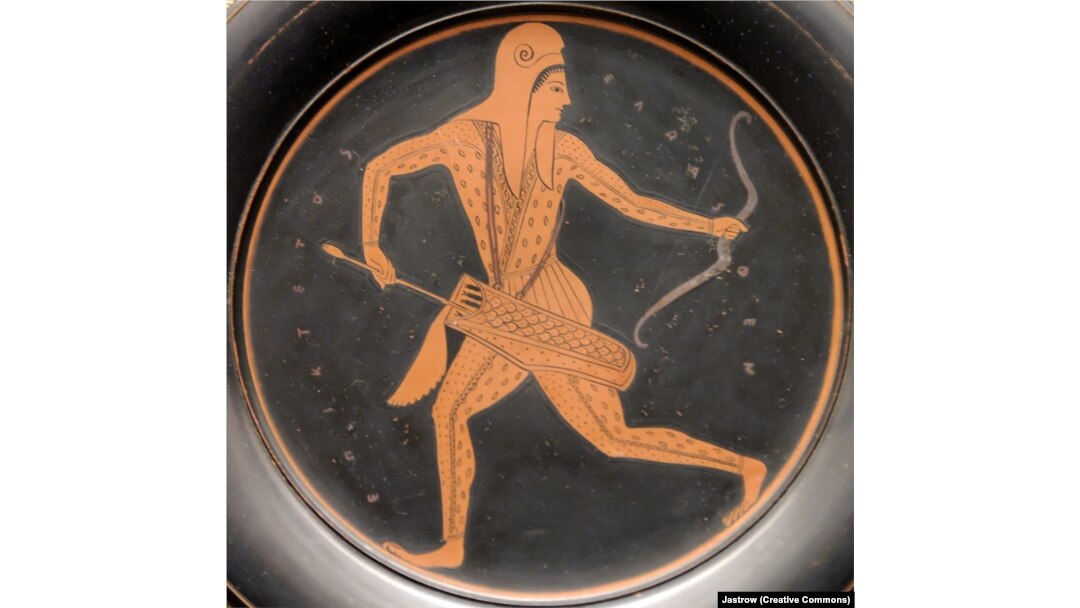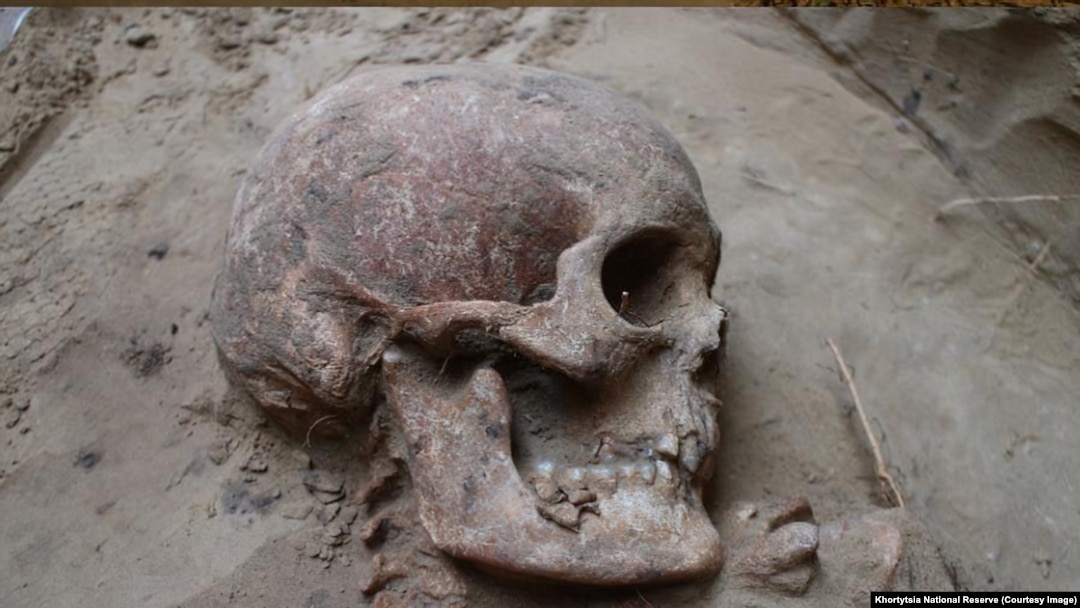Ukrainian archaeologists say a discovery in a Scythian tomb sharpens our understanding of the prehistoric warriors who once ruled the steppes of Eurasia.
On the island of Khortytsia, in the middle of the Dnieper River in Ukraine, archaeologists are scraping away at the brown soil that held the secrets of a Scythian warrior for nearly 2,500 years.

The site where the tomb of a Scythian warrior is being studied after he was uncovered in November 2020.
Scythians are believed to have been a people of Iranian origin who once ruled over vast swaths of land stretching from Europe in the west to the mountains of Central Asia in the east. They were known as fleet-footed nomads who were masters of horseback blitzkrieg on Eurasia's untamed steppes, but excavations on Khortytsia capture a very different lifestyle. The Scythian island tribe apparently served as "guardians" controlling who was able to cross the Dnieper.

An ancient Greek illustration of a Scythian warrior. A favored weapon of the Scythians was a bow made with layers of springy bone and wood, and animal sinew.
"Almost everyone was convinced that we were looking at nomads who roamed the steppe for millennia," says Maksym Ostapenko, the acting director of a national reserve on the island. "But on Khortytsia we unearthed a completely different Scythian culture of settlements that maintained livestock and agriculture."
Khortytsia Island. The history-soaked landmark is famous for its Cossack past as well as far older Scythian treasures.
Evidence of fishing -- which suggests the use of boats -- has also been found on the island, which lies a stone's throw away from the southeastern city of Zaporizhzhya. Waterways, especially those such as the broad Dnieper River, were previously seen by historians as a hostile environment for steppe dwellers such as the Scythians.
A researcher in the tomb of the Scythian warrior. On right are the bones of a young bull that was sacrificed with the man.
The Khortytsia site has been studied since the 1990s, but the most significant find was the 2020 discovery of the warrior from the band of apparent river guardians. The man, who died aged around 30, was respected enough to warrant an elaborate tomb topped with several heavy stones to protect against grave robbers.
Jewelry and ornaments found by archaeologists on Khortytsia Island that belonged to a Scythian tribe.
Ostapenko told RFE/RL that the island tribe "blocked the place of crossing to Khortytsia Island. That is, it was a deliberately built settlement, a fortification that controlled the crossing from the left bank of the Dnieper River to Khortytsia Island and onward to the western bank."
A bead found on Khortytsia dating back to the Scythian settlement.
The strategic friction point would have been critical, according to Ostapenko. "The Scythians mostly lived in the steppe, and roamed with huge herds of animals. There were seasonal migrations, so controlling the crossing of large rivers was a hugely important," he says. "Whoever controlled the crossing actually controlled the flow of various animals. Those animals dictated the lives of the steppe people."
It is unclear if the island tribe taxed those crossing the river, or were tasked with controlling the crossing point by a more powerful organization.
A Scythian monument on Khortytsia Island.
Work is continuing on excavating the Khortytsia site. Researchers say that by next year they plan to begin digs on what is believed to be a Scythian cemetery on the island.


